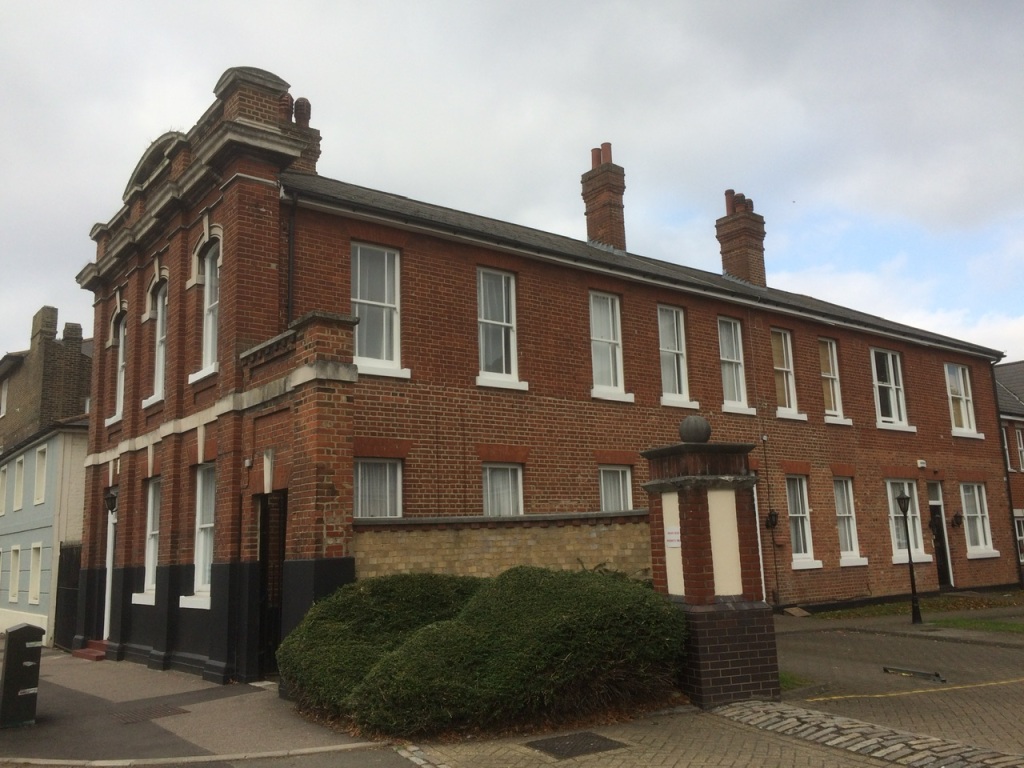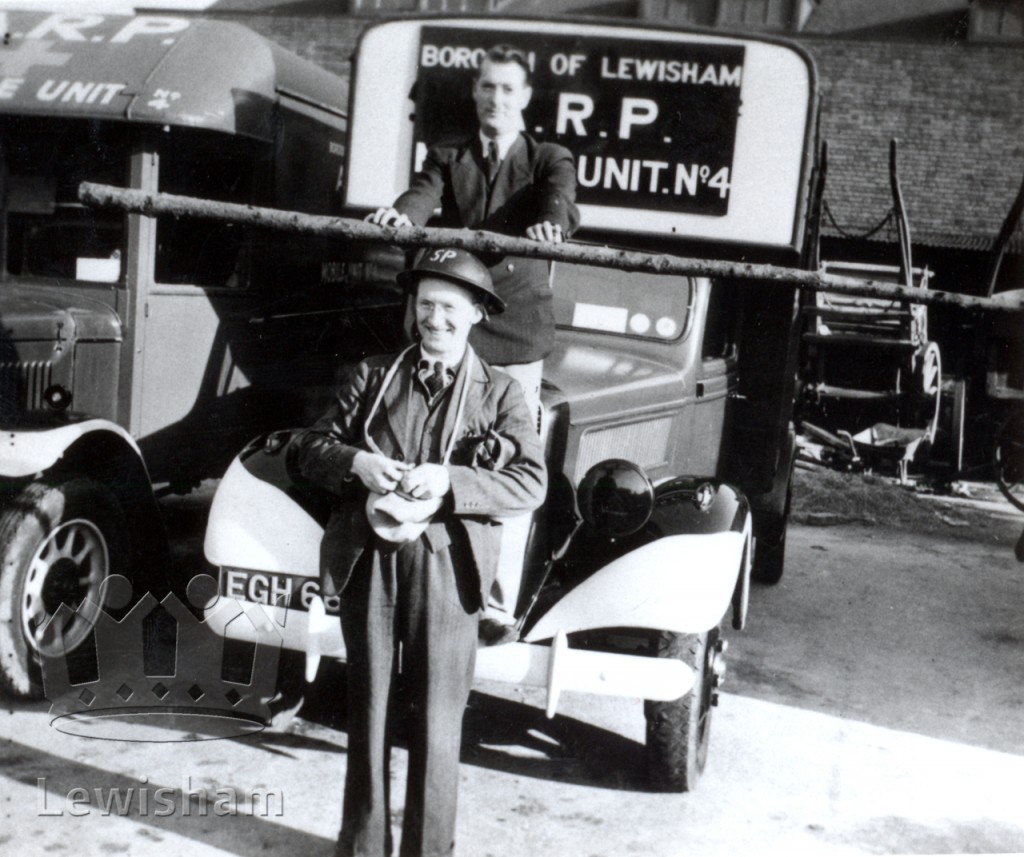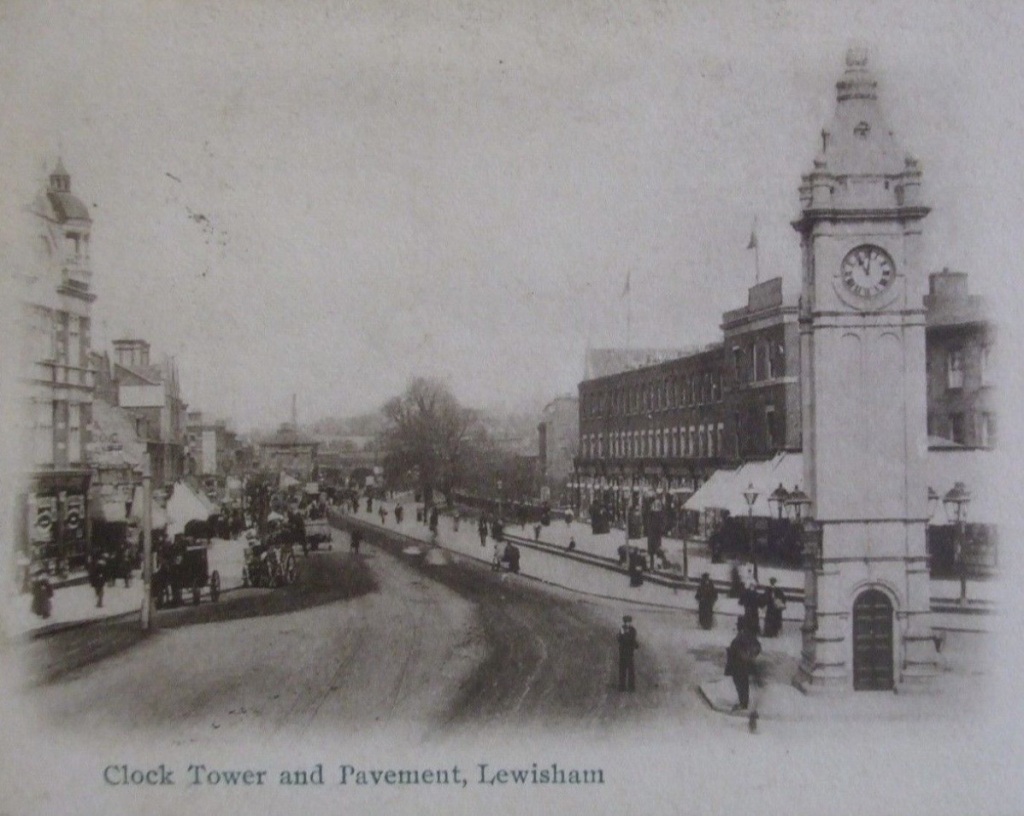There is an interesting group of buildings that are locally listed at the Burnt Ash Road end of Woodyates Road, it comprises of some former council offices and a former Royal Mail sorting office. The group was covered in passing on a post on the development of Woodyates and Pitfold Roads in the 1930s. This post looks in a bit more detail at the Parish Offices which are pictured below.
Lee was a Civil Parish whose bounds were ‘beaten’ in Running Past in 2020 – following an Ordnance Survey map from the 1890s. It was a small parish and so for a lot of the limited range of public services offered they were undertaken jointly with other parishes – the workhouse as we saw in the post on the Lesters of Lee New Town was a joint one with Lewisham and several other parishes. The Board of Works was a joint one with Plumstead, Kidbrooke, Eltham and Charlton who had their own office in Charlton Village. The parish does not seem to have had any offices before the one in what is now Woodyates Road. For example, requests to inspect tenders relating to Lee were directed to the home office of the Sureyor to the Board – Francis Freeman Thorne who lived at the large house, Rosebank, Lee Road (1). The house was demolished post war.
Plans started to be drawn up in 1882 for offices and various associated buildings, including stables, with the tenders going out in early 1883. Lee was a long narrow parish and the site chosen was close to the station which opened in 1866. The land had originally been part of Lee Green Farm, but the Crown was putting it to other uses – a mixture of substantial homes and market gardening – the latter run as part of Maller’s Nurseries. However, this was not some rural idyll as it had been part of John Pound’s brickworks and there was a clay crushing machine on or close to the site. At around the time of the building, the land opposite, where Woodstock Court now is, was being used by the Parish as a ‘mud shoot’ – effectively as dumping ground for mud, manure and the like from Lee’s roads – presumably filling up the hole from the brickworks
So, who were the people behind the plans? The Lee members of the Board of Works were a mixture of wealthy business people who had moved to what was then suburbia and some of the more established trades and shop keepers:
- Henry Couchman was a retired builder living in Lee Road, it is an old Lee name, his father had been the police constable and then the landlord of the Swan
- William Thomas Gates was a well-known local builder living on Eltham Road, amongst other things he built the Lee Working Men’s Institution
- Francis Hosier Hart was the agent for the Penns of Cedar House on Belmont Hill, he was also a historian, lived on Brandram Road
- James Richard Lloyd lived on Belmont Hill and was Lee’s representative on the Metropolitan Board of Works in addition to being a Director of an insurance company
- Henry Richard Wright was another builder, who in 1871 was living with his brother at the Royal Oak in Lee Church Street,
- Frederick Booker was a ‘China and Japan merchant’ living in Blessington Road
- Alfred Cooper Cole was a pharmacist who lived on Lee High Road
- Benjamin Maller ran nurseries on the land that was previously farmed from Lee Green Farm and lived ‘on site’ in Leyland Road
- William Brown was probably the fruiterer, greengrocer, and coal seller trading from what is now the Sainsburys site on Burnt Ash Road
The Board of Works had asked eight firms for prices, they were mostly local, but names included firms that would become well known, including Mowlem and Co. The successful tender accepted from S J Jerrard builders of Lewisham, their price of £3973, was almost £300 cheaper than the next lowest (2).
Samuel Jerrard was based at 40 Loampit Vale (on the eastern corner of Thurston Road, where a large sudent accomodation block is now situated), the firm’s main area of operation was in Ladywell – building much of Vicars Hill, Embleton, Algernon, Algiers and Ermine Roads in the 1880s and 1890s. His best-known construction in Lewisham is the Clocktower built for the Diamond Jubilee of Queen Victoria in 1897.
Returning to the offices, the building and associated costs including stabling for a dozen horses, sheds for carts and so on were to be paid for by loans, mainly over 34 months from the Metropolitan Board of Works (who oversaw major capital works across London), in total, £6705 was borrowed (4). In terms of 21st century loans for capital works this seems like a very short period. In addition to the building costs, another £227 was borrowed (5) presumably for the costs of Clerk of Works, James Robinson. Another £1500 was borrowed for purchasing horses, carts, and associated harnesses (6) repayable over 12 months (7).
The parish decided soon after works started that the horse keeper should be based on site (8).
The structure of the offices was completed by the end of November 1883, as the Parish met there on 30 November; but there was still a fair amount to do though in terms of furniture, gas supply and so on. The Sanitary Inspector, Walter Bridgen, was to be invited to be caretaker – living on site, rent free but contributing to bills (9). A successor role as inspector of roads was advertised at £2 2s in 1893 and ‘reasonable use of coals and gas.’ (10). The location and layout of the completed offices is visible from the 1890s Ordnance Survey map below, behind shops fronting onto Burnt Ash Hill – the former Lee Public Halls is visible opposite as the laundry (currently part of Travis Perkins site, but in early 2023 about to be demolished.
Lee was to become an authority in its own right in 1894 and in 1900 it became part of the Borough of Lewisham into whose ownership the offices passed. In the census the following year, Henry Butcher was listed as ‘Horse Keeper (Borough Council)’ – he was 40 and from Storrington in Sussex – he was there with his wife Ellen and nephew William Knowles, a harness maker, aged 22 from Sussex.
Also living on site in 1901 was Thomas Whebby, he was a Sanitary Inspector for the Council from Dorset, aged 51, he was there with his wife Alice and 5 children aged between 10 and 24, all born in Yeovil. Thomas Whebby remained there in 1911 and there were still people living on site in the 1939 Register -John Bain 35 was listed as a ‘Municipal Officer – Inspector if Works’ – marked as 1-7 Woodyates Road, rather that the Woodstock Road it was built on.

Perhaps, surprisingly, horses were still being used by the Borough Council in 1939 and at what was described as 9 Woodyates was the person looking after them, horse keeper, Richard Short, who got the ‘heavy work’ supplement entitling them to more rations during World War Two.
During the war the buildings were used as a base for the Air Raid Precautions unit – the horse carts are visible at the back of the photograph below.

Much had changed in the area around the Depot by the time war broke out in 1939 – the fields, later allotments and nurseries had been sold for housing by the Crown Estate – Woodstock Road had become Woodyates Road as part of the Woodstock Estate. Opposite the Council yard the former ‘mud chute’ was to become the rather elegant art deco Woodstock Court.
The building remained in council use until the 1980s when the lease to the Crown Estate expired. We’ll cover the late 20th century redevelopment as Jasmin Court in a subsequent post on the Sorting Office next door.
Notes
- Kentish Mercury 10 May 1879
- Woolwich Gazette 3 March 1883
- Kentish Independent 22 January 1887
- Kentish Independent 17 March 1883
- ibid
- Woolwich Gazette 27 April 1883
- Kentish Independent 17 March 1883
- Kentish Independent 26 May 1883
- Kentish Independent 15 December 1883
- Woolwich Gazette 18 August 1893
Credits and acknowledgements
- Census and related information is via Find My Past (subscription required)
- I am indebted to George Willis who lives in Jasmin Court (the 1990s development that the offices and stables are now part of) who has researched the site – although most of the research for this was in parallel so any errors are obviously mine. Thank you also to Darryl from the excellent 853 news blog for putting us in touch – if you don’t follow 853 you are missing out!
- The map is from the collection of the National Library of Scotland and is used on a non-commercial licence
- The postcard of the Lewisham clocktower is via eBay in late 2017
- The ARP photo is part of the collection of Lewisham Archives and is their copyright, it is used with their permission.





My family lived in these buildings from the 1950’s to 1980’s when my father was cleansing superintendent for Lewisham Council. The stables were turned into housing and garages.
If you’re still in touch with Mr Willis at Jasmine Court I’d like to get in touch with him to see if he has anything about the period my family’ were there.
Happy for ann to contact me.
Hi George How would you like me to contact you? I don’t want to post my email address on here.
I have skim read your booklet which is fantastic. I will read it properly tomorrow.
The 1969 aerial photo is fantastic as I can see our large front garden with what looks like our deckchairs and maybe family members on the lawn. I can also see the family car outside our garage! Amazing!
Ann
Our latest vesion of the Genealogy of Jasmin Court is at
https://drive.google.com/file/d/1Vgxbyay7EcorjScrPP4PGpxHT3RKFLQJ/view?usp=share_link
The booklet is one of a number we have put together for our family. Has no pretence of being an academic work.
This version now contains the contract drawings for the depot and the an extract from 1840 Tithe Applotment Map.
But the bit we like best is regarding the Woodstock Road Postmen’s Office!
Pingback: Lee Sorting Office | Running Past